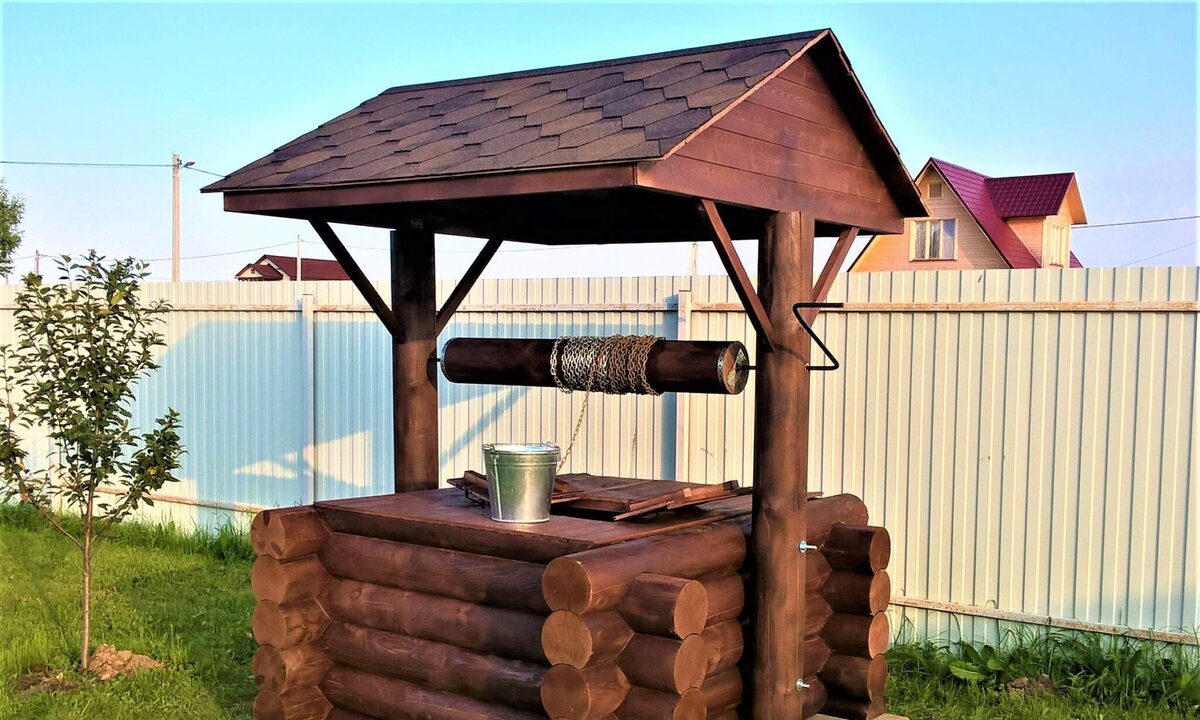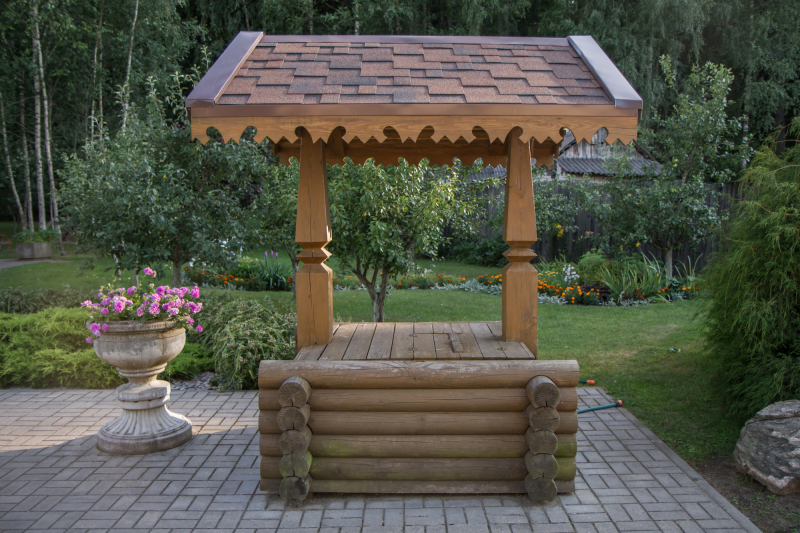Basic Information About Wells
Basic Information About Wells
Wells are technical devices designed to extract groundwater and are commonly used in the Czech Republic for both drinking and utility purposes. There are two main types of wells: dug wells and drilled wells. Dug wells are shallow, often can be excavated manually, and typically have a diameter of 1 to 1.5 meters. Drilled wells, on the other hand, reach greater depths, have a diameter of just a few centimeters, and require specialized equipment for construction. Regular cleaning and maintenance of wells are essential to ensure water quality. The choice of well type depends on geological conditions and the required water quantity, considering legislative requirements and obtaining the necessary permits during planning.

Popular Methods of Well Construction
- Dug Wells
Dug wells are constructed by manual excavation and usually have stone or brick walls. They are suitable for obtaining utility water, and their excavation is relatively simple. Their advantage lies in the possibility of deepening and lower maintenance costs. However, water quality is often lower due to shallow depth. These wells are frequently used for garden irrigation, where high water quality is not necessary, but availability and ease of maintenance are important.
- Drilled Wells
Drilled wells are constructed using specialized drilling rigs and reach significant depths, allowing access to water that is less prone to contamination and usually of higher quality. Construction is quick and efficient, but requires access to drilling equipment. Drilled wells can also have a positive ecological impact by reducing dependence on surface water sources, which are often more polluted and overburdened. These wells are ideal for both drinking and utility water, providing a stable water supply throughout the year.
Main Causes of Well Damage
Wells can be damaged for several reasons. The most common include:
Sedimentation and Blockage: Sand, clay, and other fine particles can infiltrate the well and gradually block it. This process reduces the well's capacity and restricts water flow. Sedimentation is often due to erosion of the surrounding terrain or poorly constructed wells.
Contamination: Surface water containing various pollutants, such as chemicals, bacteria, or other harmful substances, can infiltrate the well and degrade the water quality. Contamination can come from nearby agricultural fields, industrial areas, or inadequate waste systems.
Corrosion and Wear: Metal parts of the well, such as pipes and pumps, can corrode over time due to chemical reactions with water and the surrounding environment. Corrosion can lead to water leaks, reduced water quality, and overall wear of the well equipment. Regular maintenance and inspection can help extend the lifespan of these components.
Decline in Groundwater Levels: Long-term droughts or excessive groundwater pumping can cause a drop in groundwater levels. This phenomenon affects the well's yield, as the pump may no longer reach the water, leading to reduced or stopped water supply. Additionally, groundwater level decline can cause soil subsidence, further damaging the well structure.
Expert Tips for Well Cleaning
Regular cleaning and maintenance are key to the long-term functionality of a well. It is recommended to perform water quality checks at least once a year and to clean and disinfect if water quality deteriorates. Experts suggest the following procedures:
Mechanical Cleaning:
- Removal of sediments and debris using high-pressure water.
- Use of brushes or special tools for thorough cleaning of the well’s internal walls.
In case of heavy contamination, mechanical suction of sediments may be necessary.
Disinfection:
- Use of special disinfectants to eliminate microorganisms.
- Chlorine or other approved disinfectants are recommended.
- The disinfectant should be evenly applied to the entire internal surface of the well.
After disinfection, it is important to allow the well to ventilate adequately and flush it with clean water.
Equipment Maintenance:
- Regular inspection and possible replacement of suction baskets, pumps, and other parts.
- Inspection of seals and joints to prevent leaks or contamination of water.
- Cleaning or replacement of filters if part of the system.
Checking electrical components of the pump, such as cables and connectors, to ensure safe operation.
By following these steps, you will not only ensure the cleanliness and quality of the water in your well but also extend the life of the entire system.
Step-by-Step Guide to Drilling Wells
Preparation
First, a hydrogeological survey is necessary to determine a suitable location and depth for the well. This survey ensures the well will be placed in a location with sufficient groundwater. Next, obtain the necessary permits from the relevant authorities to legally proceed with the work.
Exploratory Drilling
A test borehole is drilled to verify the presence and yield of groundwater. This step is crucial to determine if the location is suitable for a future well.
Drilling
Using a drilling rig, the well is drilled to the required depth. In the Czech Republic, Adler B25 rigs are often used, capable of drilling even in difficult terrain. This step involves the actual drilling, which may take several days depending on conditions.
Well Casing
After reaching the desired depth, the borehole is cased with thick-walled PVC pipes to ensure the well's stability and long life. These pipes also prevent soil collapse into the borehole.
Gravel Packing and Sealing
The space between the pipes and the borehole walls is filled with washed gravel, ensuring filtration and stability. Finally, a cement-bentonite seal is created to prevent surface water infiltration. This step is crucial for protecting groundwater quality.
Pump Installation
After the well is completed, a pump is installed to draw water from the well to the surface. The pump must be appropriately sized for the depth and yield of the well.
Approval
After all work is completed, an inspection and approval must be obtained to use the well. This step includes an inspection and approval by the relevant authorities to ensure the well meets all standards and regulations.
Why It Is Important to Entrust the Work to Professionals
Constructing a well is a technically demanding process requiring expertise and experience. Professionals have the necessary equipment and know-how to ensure:
- Safety: Experts ensure that all work is carried out safely and in compliance with regulations.
- Efficiency: Professional approach and equipment guarantee fast and quality work.
- Quality Assurance: Experts provide a guarantee for the work performed and the materials used.
Time and Cost Savings: Although the initial investment may be higher, a professionally constructed well has a long lifespan and requires less maintenance.
To find such professionals, you can use Wecan.cz. Through this platform, you can easily find and contact qualified professionals who will meet your requirements and ensure high-quality work. Wecan.cz is a reliable online platform connecting customers with verified experts in various fields. It offers a wide range of services and facilitates the search and evaluation of professionals based on reviews from previous customers. This platform ensures that users find the best experts for any project.

Well Cost
The cost of drilling a well is influenced by several factors, including:
- Hydrogeological Survey: This usually costs between 5,000 and 17,000 CZK. This survey is necessary to determine whether there is enough water on your property and at what depth.
- Exploratory Drilling: The cost is around 2,900 CZK per meter. This borehole can subsequently be used as the actual well.
- Project Documentation: Costs for project documentation range from 8,000 to 13,000 CZK. This documentation is necessary to obtain a building permit.
- Building Permit: The cost of a building permit is between 300 and 600 CZK, depending on whether the well is being built in conjunction with a house or separately.
- Well Drilling: The cost per meter of drilling ranges from 1,700 to 3,000 CZK, with the final price depending on the depth and type of substrate.
- Hydrochemical Work: Basic chemical and bacteriological water analysis costs between 1,500 and 6,500 CZK. This analysis is important for assessing the water's health safety.
Pumping Equipment: The cost of a pump is around 9,000 CZK, but may vary depending on the quality and material of the pump.
The total cost of drilling a well can range from 30,000 to 100,000 CZK, depending on specific conditions and requirements. When planning well construction, it is important to consult experts who will provide an accurate price quote based on your property's specific conditions